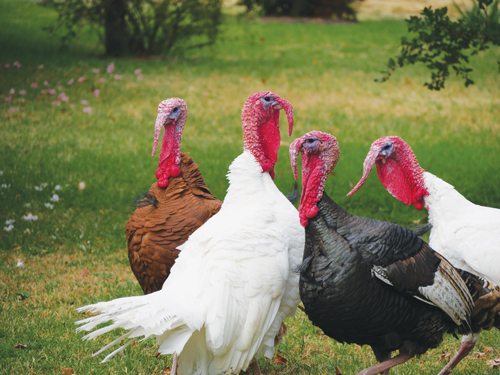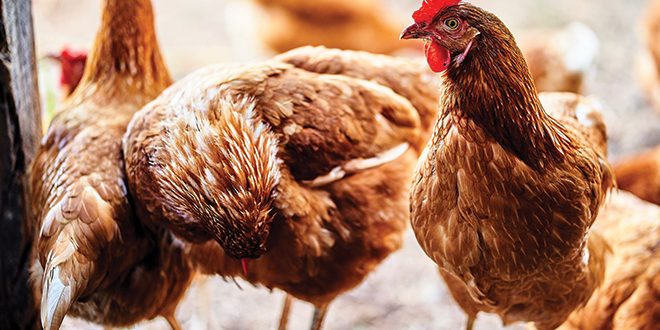After seven long years in development, Australia’s poultry standards and guidelines document has been published and includes some welcome – and long overdue – recommendations for improvements to the welfare of hundreds of millions of birds.
The standards are yet to be endorsed by state and territory agriculture ministers and ideally, will underpin state and territory legislation on the farming of poultry.
If endorsed, the standards will replace the current voluntary model code.
Readers may have seen the recent statements by RSPCA focused on acknowledging the confirmed phase out date for battery cages – which 5 million layer hens are confined to in Australia – but there have also been some important albeit small wins for turkeys, ducks and meat chickens.
Here are a few key take-outs from the standards and what they could mean for our feathered friends.
Better conditions for turkeys
Smart and curious, turkeys – along with chickens and ducks – are one of the poultry species most commonly farmed in Australia for food. As for chickens, turkeys are curious about the world around them and need different forms of enrichment to keep their minds active.
Under the revised standards and guidelines, turkeys must now be provided with perches and platforms and objects to peck at, as well as environmental enrichment such as foraging materials and covers for hiding. Improvements to shed lighting regimes have also been advised, which if endorsed could give turkeys proper rest periods in continuous darkness and periods of light to encourage activity.
More water for ducks
There’s a reason for the saying ‘water off a duck’s back’. Ducks are waterfowl and have adapted to spend a large amount of their time in water.
Under the previous Model Code of Practice, there was little provision for ducks to have access to water on farm other than drinking water. The standards and guidelines require breeding ducks by 2032 to have access to water to allow natural behaviours such as preening, head dipping and dabbling.
Having access to water to perform these behaviours is very important for ducks –they help to keep their feathers clean, keep their feet free from parasites and regulate their body temperature.
The RSPCA would like to see all ducks have access to water to express their natural behaviours and continues to advocate for this.

Turkeys – along with chickens and ducks – are one of the poultry species most commonly farmed in Australia for food. Photo: Mikkel Bergmann
Legislative improvements for meat chickens
Though the majority of meat chickens in Australia are farmed to the RSPCA’s standard by producers who are certified RSPCA Approved – and are required to have perches and environmental enrichment and much more – the revised standards and guidelines now require all meat chickens to have access to quality litter to encourage natural pecking, foraging and scratching behaviours.
The standards also call for minimum light intensity standards and required periods of darkness for activity and rest, as well as ventilation and temperature requirements in barn.
The minimum legal space allowance has also been increased to allow for chickens’ growth rate to ensure that as they grow bigger, they still have adequate space to flap their wings and move freely.
These new recommended improvements on farm could be a meaningful shift in moving meat chicken farming practices in closer alignment with the RSPCA’s standards, which focus on evidence-based improvements to animal welfare.
But clucky chooks still need your help
An end to battery cages is in sight, with the national poultry standards and guidelines calling for a phase out of all battery cages across Australia by no later than 2036.
An end date for battery cages in Australia is a win for layer hens and the community, who have been calling for a phase out for the past 40 years.
However, the choice of a date so far into the future means that millions of layer hens will continue to suffer in barren conditions. Good welfare simply cannot be achieved in a battery cage, and this is no life for a layer hen.
States and territories are yet to endorse and implement the standards, but RSPCA is urging them to do so as soon as possible. There’s no reason Australia should wait until 2036 to phase out battery cages.
States and territories have the power to implement a phase out ahead of schedule. The ACT proactively did so in 2014, as well as many retailers and brands having committed to transitioning away from using cage eggs by 2025.
Check out the RSPCA’s ‘Cage Free and Proud’ directory to see if your favourite brand is one of them.
You can also use the power of your dollar to end battery cages sooner by purchasing cage egg alternatives such as barn laid, free range or RSPCA Approved.
Similarly, check for the cage-free label on products containing eggs such as cake mix and ready meals – or look for cage-free eggs on your favourite café or restaurant menus, as cage eggs can often be hidden in the ingredients.
Increasing the demand for cage-free eggs is a tangible signal to brands that Australians do not support the use of battery cages or companies that source from producers using cages.
RSPCA

